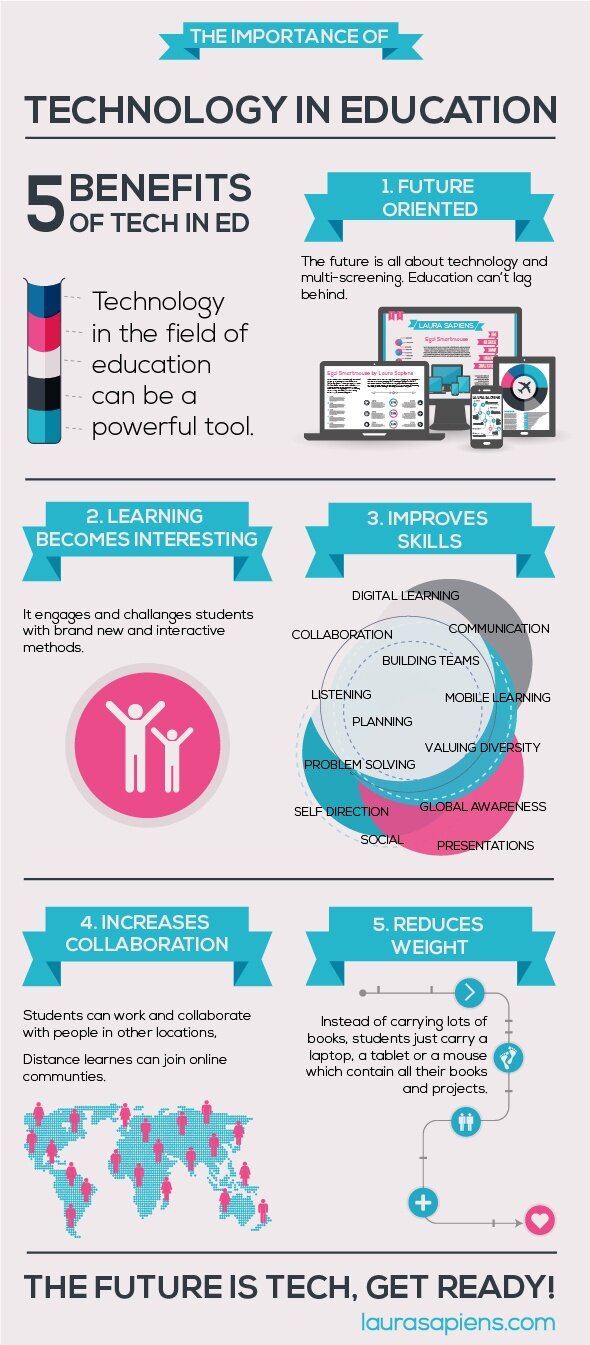Technology in Education: Top-Notch Ways to Invest your Time
There are numerous ways to infuse technology in education for K12 curriculum. Students live in a universe where they can communicate online through instructional technology and accelerate their learning experience through various forums. We are seconds away from picking up a new language, collaborating on innovative projects, and reading about revolutionary thinking just by pushing a button. So why haven’t we connected with specialties in the field, designed a project using real-word solutions, or allowed for our students to work with an organization in the community that will bring new ideas to current practices? I’m not sure but in order to push towards a better future, we have to include these things in our curriculum.
In an environment where students have diverse learning styles, technology provides access in various forms while teachers are able to make inserts to the school K12 curriculum (U.S. Dept. Education). We know each student poses their learning challenges especially with computer hardware, and software; currently it is now a vertical climb for our teachers but they can help them overcome this with time, practice, and patience. In a school year, as teachers, we spend at least the first month going over school norms and procedures, spending time, in the beginning, to show students how to upload assignments, record their screens, and connect with online platforms is crucial due to Covid-19.
Ed tech Helping our students with Accessing Content
The importance of technology in Education/instructional technology k12 curriculum
For students, learning a second language can be assisted with translation programs and support locally and abroad. Those with neurological differences and learning disabilities are given equitable opportunities to learn the same material as other students in their class with the use of assistive technology (WETA). Assistive technology has the potential to boost and drive passion while learning new things. As for science, the scientific workings behind the various forms of technology remain consistent, regardless of where students are born and what language they speak. Just think, anyone of any age group, ethnicity, birthplace, native tongue, or culture can understand how to use computer hardware and software in a learning environment just the same as someone from another birthplace or culture. In turn, that technology can help with understanding the worlds between two students looking to gain knowledge into a culture, community, and region.
Connecting Student Learning & Technology
For those looking to read deeper into the relationship between education and technology, Mary Burns and Sharon Adams provide a thorough review in Connecting Student Learning & Technology. The publication’s first chapter assesses constructivism as a whole. Constructivism is a learning theory that uses the personal experiences of the student to assist in education (Burns & Adams). For example, if a child was learning about colors, the child may remember them because of the objects they have found in their home. Accompanying Chapter 1, Chapter 2 offers a variety of classroom activities that uses constructivist teaching. A couple of these activities include storytelling and how students are able to express a view of the world through their lens and share it with their classmates. The article’s third chapter introduces computers to constructivist theory and pinpoints areas where said computers can be used. To quote page 25, “Learning is internally controlled and mediated by the learner” (Burns & Adams). Chapter 4 continues the article by outlining the many ways that technology can enhance a student’s education. Authors Burns & Adams make it a point to write about technology as being the support of one’s learning experience, as opposed to technology taking over the classroom. Finally, Chapter 5 is a collection of questions paired with answers. It further elaborates on the potential educational purposes of computers and maintains a handful of useful notes which teachers can use in the classroom.
Summary
With technology in education for classroom, there is no limit to the number of ways to use it. Burns & Adams write about their concerns about its dominance over traditional teaching and learning methods, despite the potential it has to help make the experience easier for each student. The authors use constructivist theory to explain how computer hardware and software give students the means to absorb the curriculum in ways they best understand it via instructional technology. The concern about a complete technical takeover can be addressed by including more real-life, hands-on experience with the subject that involves all forms of learning – audio, visual, tactile, olfactory, memory, worksheets, etc. Overall, it is necessary for there to be a balance of teaching methods used in school.
Sources:
Adams, Sharon & Burns, Mary. (1999). Connecting Student Learning and Technology. https://www.researchgate.net/publication/264978570_Connecting_Student_Learning_and_Technology
“Use of Technology in Teaching and Learning | U.S. Department of Education.” U.S. Department of Education, www.ed.gov/oii-news/use-technology-teaching-and-learning. Accessed 19 Aug. 2020.
WETA. “Assistive Technology for Kids with Learning Disabilities: An Overview.” Reading Rockets, 26 Sept. 2019, https://www.readingrockets.org/article/assistive-technology-kids-learning-disabilities-overview

